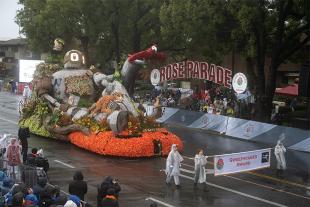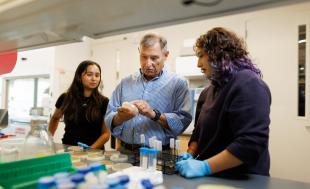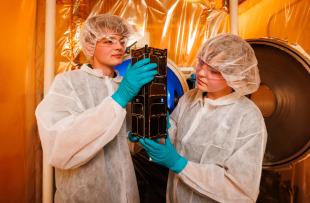Soaking Up the Sun: Student Research Aims to Make Campus’ Solar Field More Powerful
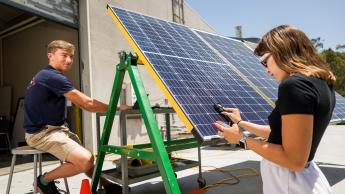
On the northwestern edge of campus, glimmering rows of solar panels at Cal Poly’s Gold Tree Solar Field angle themselves toward the sun, generating millions of kilowatt-hours of electricity each year and saving millions in energy costs. But there has always been a challenge: because the solar field is set on the naturally sloping landscape, several rows of panels cast shadows on each other when the sun is low in the sky, which chips away at the overall power output.
This summer, a team of engineering students is continuing research to better predict power output for different solar tracking settings — and generate more power for campus over time. The students are part of the College of Engineering’s Summer Undergraduate Research Program (SURP), which has empowered teams of students to tackle meaningful research alongside faculty and industry partners since 2017.
“Software, all the technology and the way these solar panels track the sun assume that you're on a flat surface,” says mechanical engineering Professor Jacques Belanger, a solar industry veteran who oversees several renewable energy projects. Thanks to the university’s partnership with REC Solar, which constructed and manages Gold Tree, students and faculty have access to the field’s data to learn from the project.
Belanger says refining computer modeling and tracking software will be important to the industry as flat parcels are not always available and solar panels are installed on more uneven terrain in the race to leverage renewable energy and hit ambitious targets for renewables.
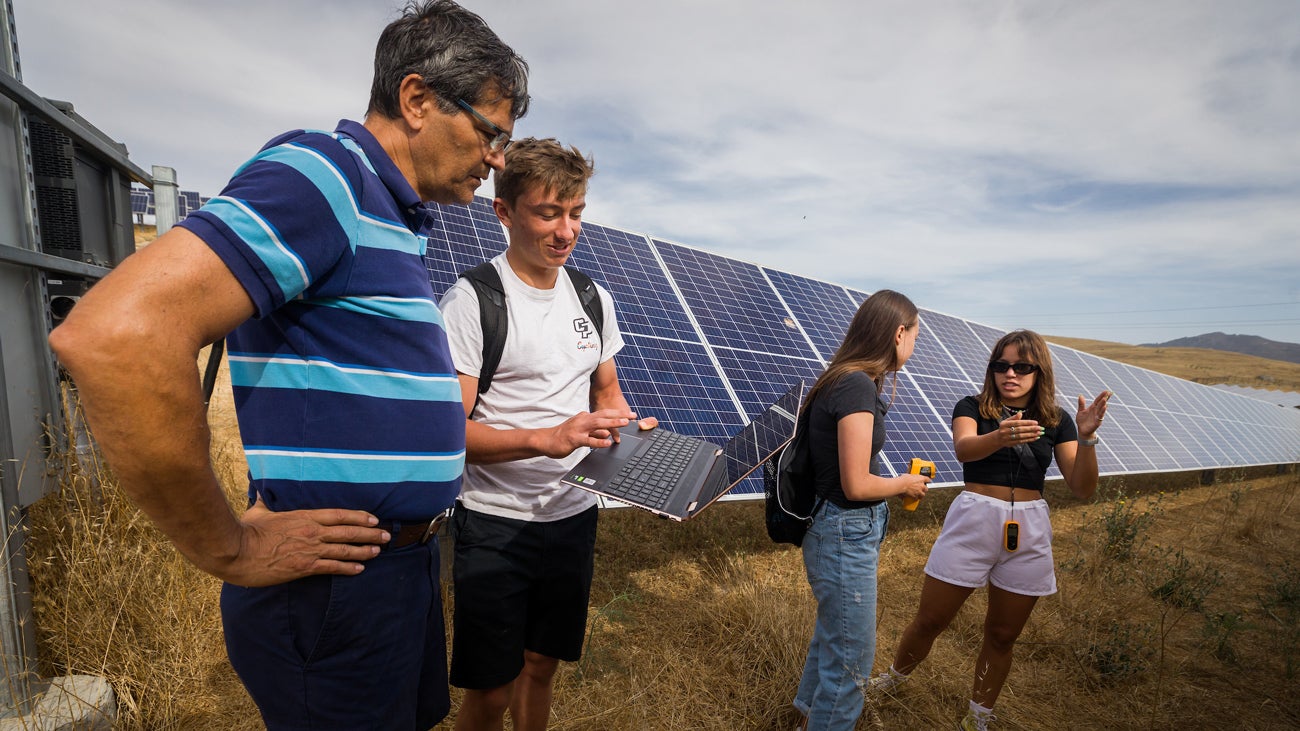
“Ultimately what we want is to publish this information and allow any solar fields that are in the same situation to not have to go through everything we did,” says Belanger. “What we're trying to quantify is applicable to any solar field in the country or the world.”
Sophie Getty and Ryan Dubois, both mechanical engineering students, are collecting data in the field and running tests in the lab as part of the SURP project. One of their first steps is to better assess the physical conditions in the field — wind speed, panel temperature, the sun’s radiance, angles of the panels, and geometry of shade patches.
“That little bit of shading actually cuts out a lot of the power,” says Getty, “and it depends on where the shade is.” As they work, they’re carefully documenting the data collection process to instruct others optimizing panels in different environments.
In the lab run by Belanger and Professor Andrew Davol, the team mimics the shading patterns happening in the field to see how individual panels produce power at different times of day. Now, they’re scaling up their tests to connect multiple panels to one inverter as they would be out in the field in a row configuration.
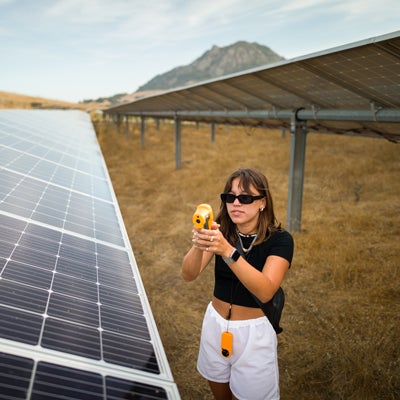
“We have three panels that are similar to the ones in the field, and we test what it's like when you shade 10% of one panel or 20%, and then do a lot of recording,” she adds.
All of the environmental factors affect how well a panel can produce energy — one additional degree Celsius can reduce efficiency by a measurable amount.
“We're trying to predict panel temperature based on weather conditions, which has turned out to be really difficult mostly because wind gets affected a lot by the panels themselves,” said Dubois. “The wind speed is really different on the first row than it is in the middle of the field.”
The researchers routinely refer back to reports by previous student researchers who have laid the foundation for this work over the past few years. The SURP model empowers students to design their own data collection methods, which has allowed Getty and Dubois to test different tools and hypotheses in hopes of standardizing the way others monitor their solar fields.
“The point of SURP is for you to figure it out,” says Getty of the program’s aim. “That was scary, but I really liked the flexibility of the job, and we're building relationships with two of our professors.”
The data collected this summer weaves into the thesis of master’s student Katelynn Dinius, who is refining a computer model of the field in the programming platform MATLAB. She is tuning the model to more accurately predict and eventually optimize power output in specific conditions.
“Solar technology is not perfect and is still rapidly developing. There are many problems left to be solved like power optimization, energy storage, or panel recycling,” says Dinius. “I’m really grateful for the opportunity to focus on one of these problems — this kind of research could help us get another step closer to achieving carbon neutrality.”
The project team is excited about the prospect of seeing its work appear in a scientific publication and further the momentum toward more sustainable energy sources.
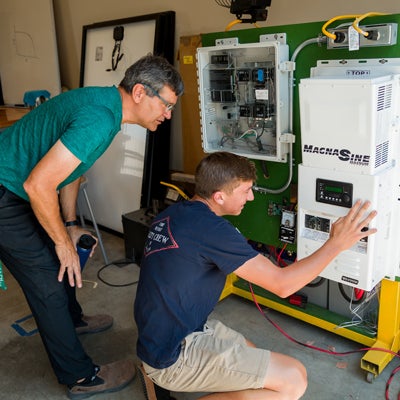
“I came to college wanting to study and work in renewable energies,” says Dubois, who is concentrating in energy resources within the mechanical engineering major. “This is exactly what I want to do after college — this project has just cemented that for me.”
Getty, who is concentrating in mechatronics, sees the link between her work and a career in rigorous product testing. Another highlight: this is the first time she’s been able to be on campus since March of 2020 when learning went virtual due to the COVID-19 pandemic.
The SURP experience gave the engineers the chance to reunite with classmates and work in a lab solving a pressing problem.
“Our team likes to ask a lot of questions, and we’ve each had our own teaching and learning moments,” echoes Dinius. “After more than a year of virtual communication, being able to work in person and as a team has transformed the learning experience.”
This SURP initiative was sponsored by Sprague Energy. For more information on all of this year’s SURP initiatives, visit the College of Engineering website.
Don't want to miss any cool Cal Poly News stories? Sign up for our monthly newsletter, the Cal Poly News Recap!

